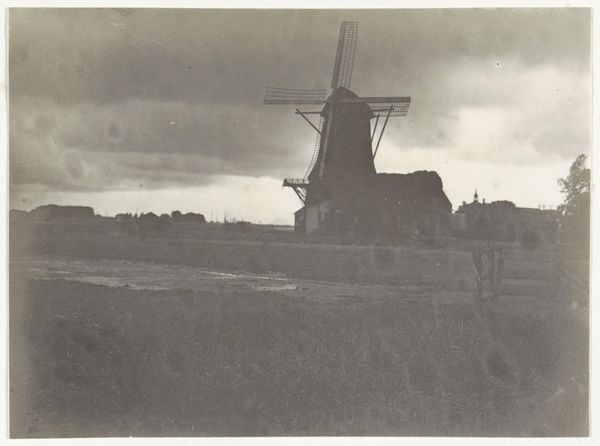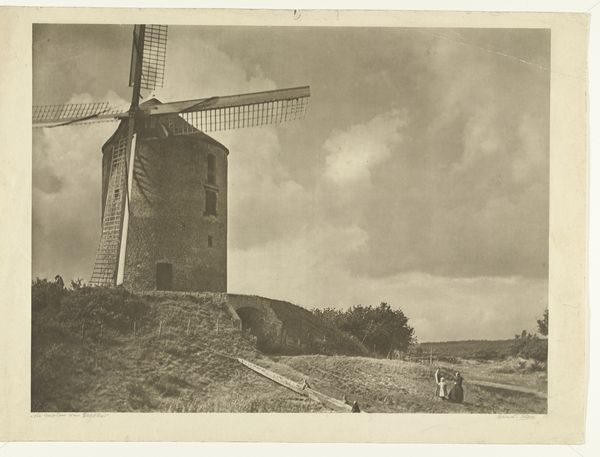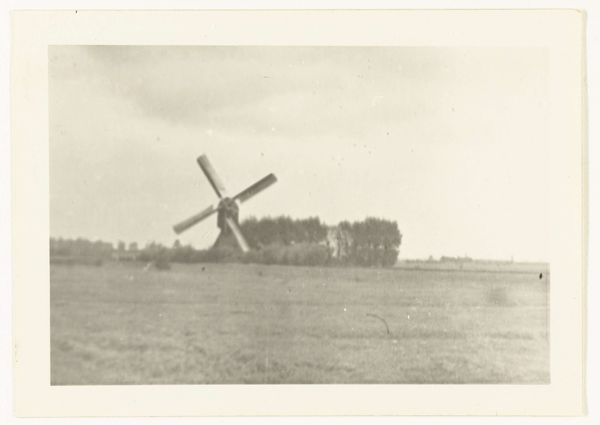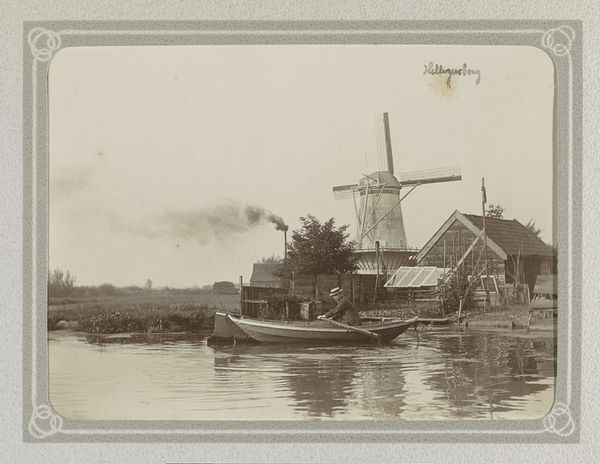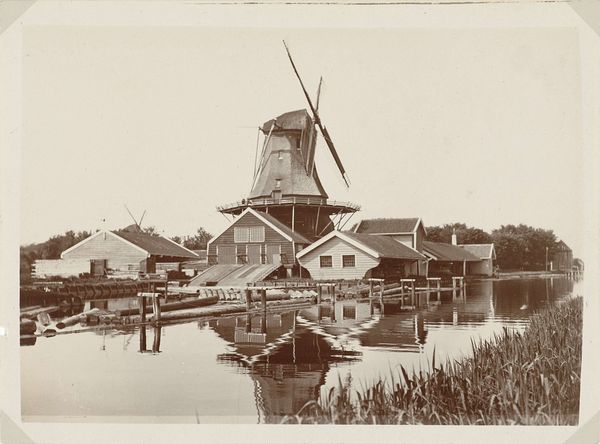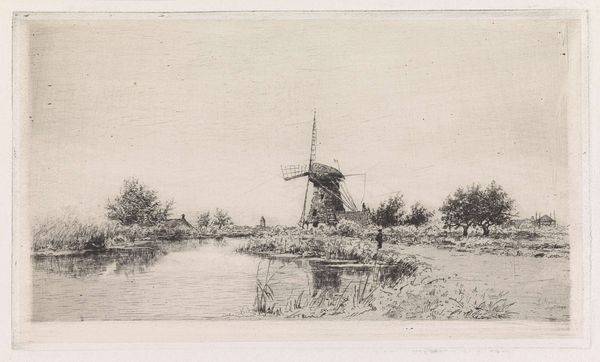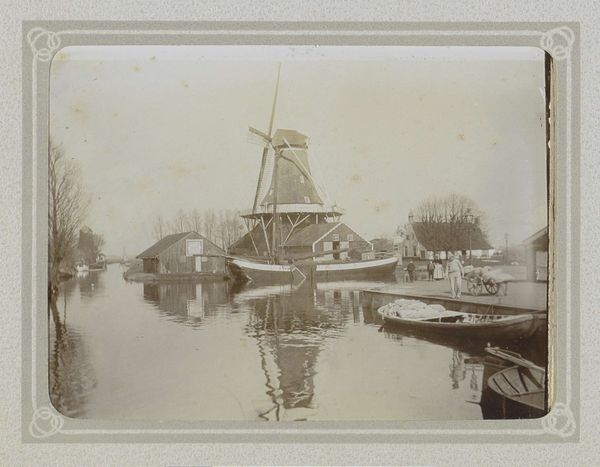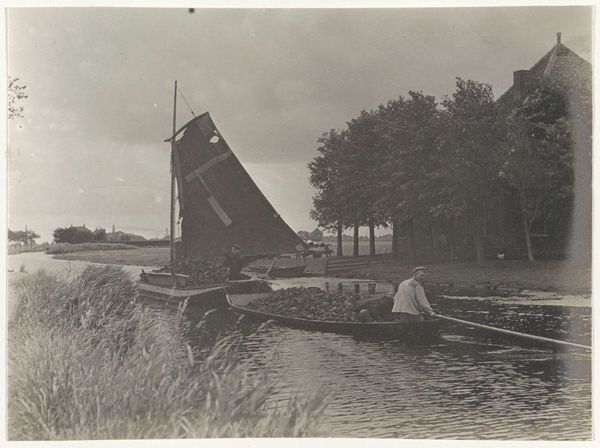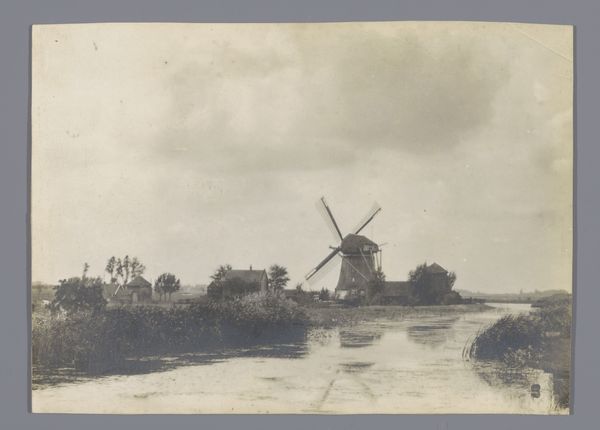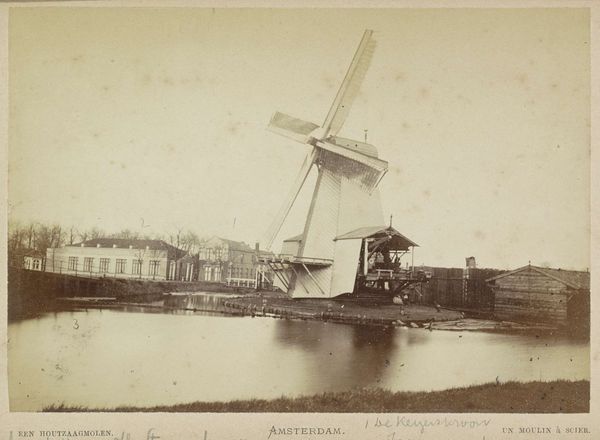
Gezicht op de bovenmolen van de Bovenpolder Zestienhoven en Oudendijk te Overschie c. 1900 - 1910
0:00
0:00
print, photography
#
still-life-photography
#
pictorialism
# print
#
landscape
#
outdoor photograph
#
outdoor photo
#
outdoor photography
#
photography
#
monochrome photography
#
cityscape
#
realism
#
monochrome
Dimensions: height 68 mm, width 92 mm
Copyright: Rijks Museum: Open Domain
Editor: This photogravure, titled "Gezicht op de bovenmolen van de Bovenpolder Zestienhoven en Oudendijk te Overschie" and attributed to G. Hidderley, captures a windmill around 1900-1910. The monochrome palette evokes a sense of quiet nostalgia. What sociopolitical narratives can we unpack here? Curator: Well, first, consider the subject: the windmill. These weren't just picturesque objects; they were integral to Dutch land management and economic survival. This image emerges at a time of industrial shifts. Doesn't the choice to depict this older technology – knowing that industrial modernity is in ascendance – feel pointed? Editor: So, this could be read as a statement on preserving tradition amidst change? Is the artist perhaps making a comment on class, representing a rural community in the face of urban encroachment? Curator: Exactly! And let’s also look at pictorialism, the style to which the photograph is related. This was an intentional movement, striving to make photography more artistic. Doesn't that implicitly question the rapid rise of photography as a tool in service to objectivity? Editor: It definitely seems to elevate the emotional response to a subject, favoring artistic expression over purely documenting reality. Could that be read as resistance? Curator: It can indeed. How is Hidderley reclaiming agency over their cultural representation of the Netherlands through aestheticization? It invites us to critically consider the power structures at play. Editor: This is amazing, I am really grasping it now. Thank you so much for your help, it's great to move away from basic interpretation and unpack such intersectional topics. Curator: My pleasure! Now you’re starting to think about the wider context behind this piece, and hopefully every other artwork you see.
Comments
No comments
Be the first to comment and join the conversation on the ultimate creative platform.
